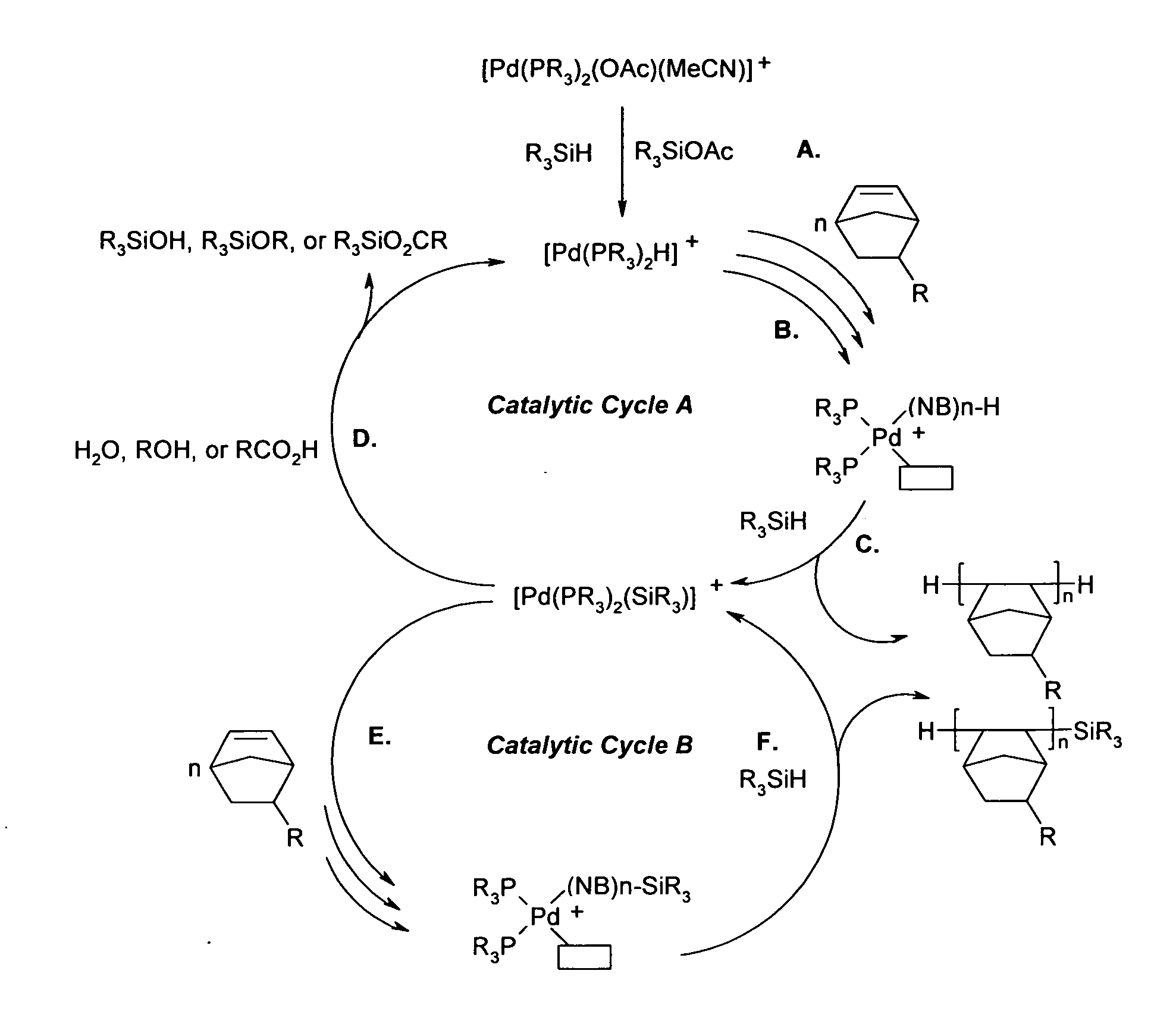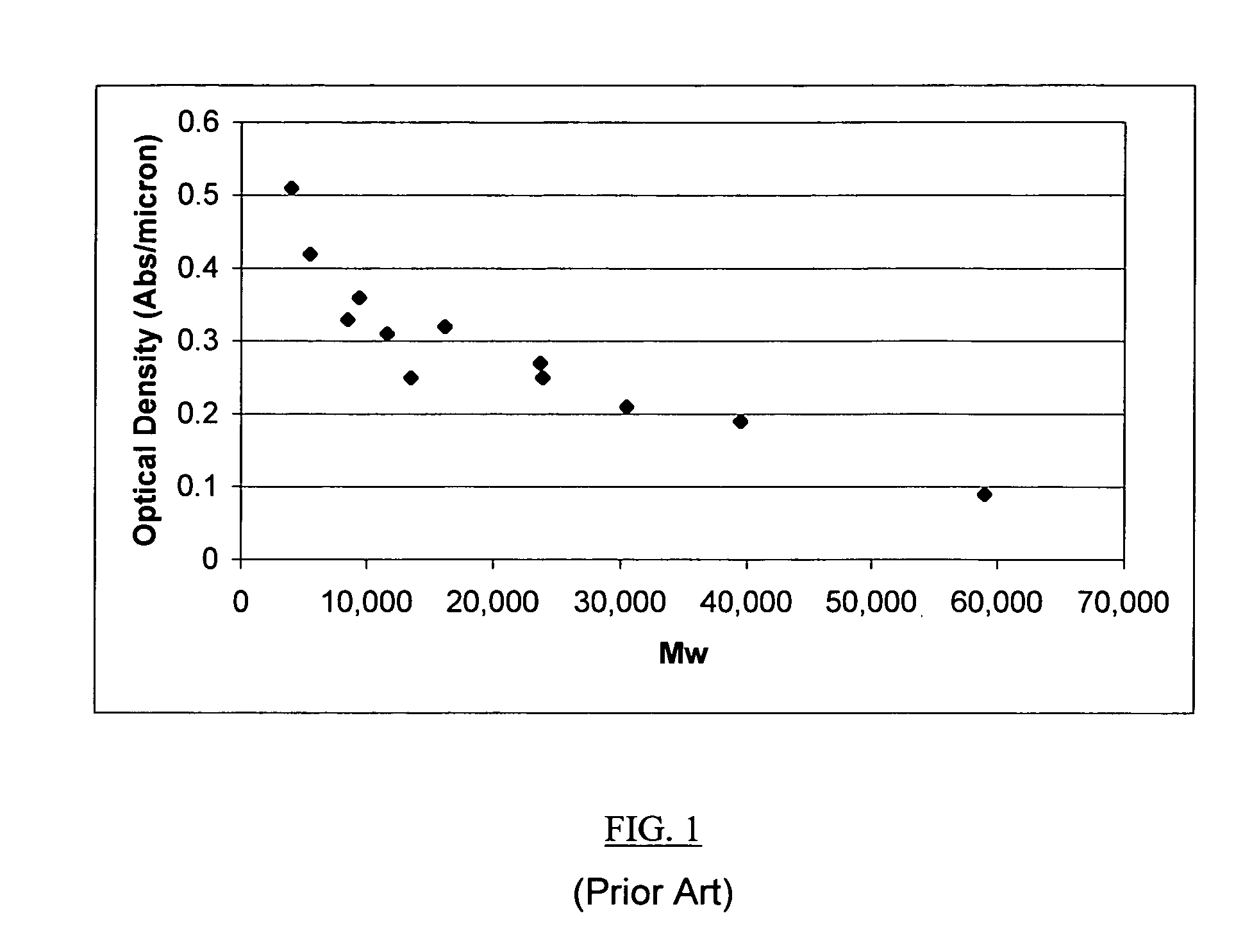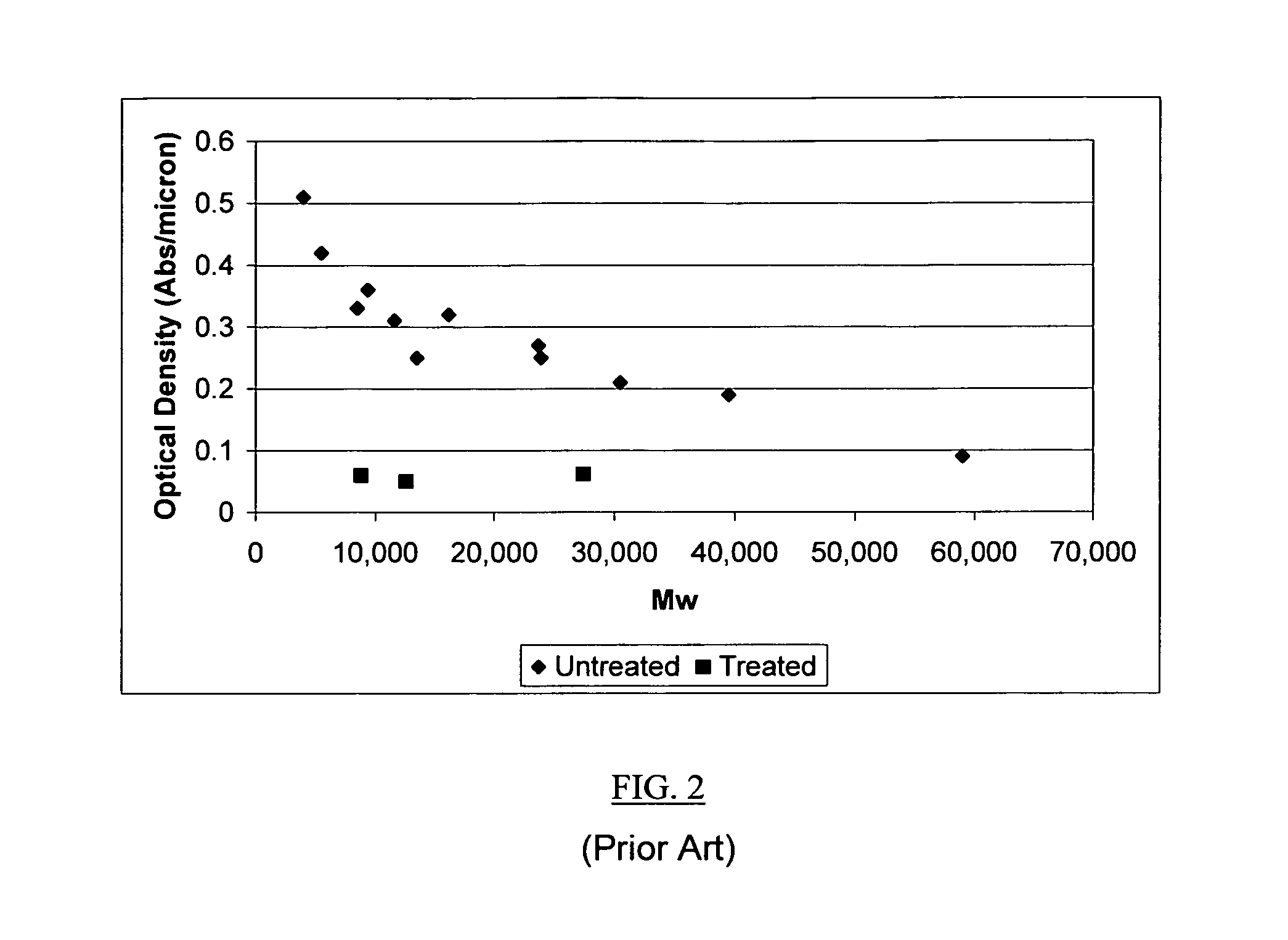Vinyl addition polycylic olefin polymers prepared using non-olefinic chain transfer agents and uses thereof
a polycylic olefin and polymer technology, applied in optics, instruments, auxillary/base layers of photosensitive materials, etc., can solve the problems of not being able to meet the requirements of exposure at 193 nm, the optical density of current resist compositions employed for longer wavelength radiation sources, 248 nm and above, and being too high at wavelengths of 193 nm and below to be viable for exposure at such wavelengths. , to achieve the effect o
- Summary
- Abstract
- Description
- Claims
- Application Information
AI Technical Summary
Benefits of technology
Problems solved by technology
Method used
Image
Examples
example 2
Catalyst Example 2
trans-[Pd(NCC(CH3)3)(OAc)(P(i-propyl)3)2]B(C6F5)4
[0140] A solution of LiB(C6F5)4.(OEt2)2.5 (0.960 g, 1.10 mmol) and trimethylacetonitrile (10.0 mL, 90.5 mmol) was added slowly over a 5 minute period to a stirring solution of trans-Pd(OAc)(P(i-propyl)3)2 (0.600 g, 1.10 mmol), CH2Cl2 (10 mL), and trimethylacetonitrile (5.0 mL, 45 mmol). The mixture was stirred for 4 hours and then filtered using a 0.2 μm PTFE filter to remove the LiOAc by-product and concentrated by evaporation. The resulting residue was dissolved in CH2Cl2 (10 mL), diluted with pentane (2 mL), and filtered a second time. Additional pentane (30 mL) was added to the orange solution causing the product to form an oil that was separated, washed with pentane (2×20 mL), and dried under reduced pressure to afford [trans-Pd(NCC(CH3)3)(OAc)(P(i-propyl)3)2]B(C6F5)4 (1.224 g, 91%) as a yellow / orange solid. 1H NMR (CD2Cl2): 1.38 (m, 36H, CH3), 1.40 (m, 6H, CH(CH3)2, 1.42 (s, 9H, NCC(CH3)3, 1.92 (s, 3H, CCH3),....
example 3
Catalyst Example 3
trans-[Pd(OC(C6H5)2)(OAc)(P(i-propyl)3)2]B(C6F5)4
[0141] A mixture of LiB(C6F5)4.(OEt2)2.5(0.960 g, 1.10 mmol) and CD2Cl2 (10 mL) was slowly added to a rapidly stirring solution of trans-Pd(OAc)2)(P(i-propyl)3)2 (0.600 g, 1.10 mmol), benzophenone (3.34 g, 3.60 mmol ), and CD2Cl2 (10 mL). The mixture was stirred for 4 hours and filtered through a 0.2 μm PTFE filter to remove the LiOAc by-product. The solution was then washed with H2O (3×30 mL) and dried with MgSO4. Pentane (30 mL) was added to the solution and the product separated. The resulting material was dissolved in CD2Cl2 (20 mL), washed with water (2×20 mL), filtered, and dried under reduced pressure to afford trans-Pd(OC(C6H5)2)(OAc)(P(I-propyl)3)2]B(C6F5)4 (0.95 g, 61%) as an orange solid. 1H NMR (CD2Cl2): 1.39 (m, 36H, CH3), 2.34 (s, 3H, CCH3), 2.75 (m, 6H, CH(CH3)2, 7.47 (m, 4H, aryl), 7.58 (t, 2H, aryl ), 7.80 (d, 4H, aryl). 31P NMR 47.03 (s).
example 4
Catalyst Example 4
trans-[Pd(HOCH(CH3)2)(OAc)(P(i-propyl)3)2]B(C6F5)4
[0142] A solution of LiB(C6F5)4.(OEt2)2.5 (0.960 g, 1.10 mmol) and 2-propanol (10.0 mL, 130 mmol) was added dropwise to a stirring solution of trans-Pd(OAc)2(P(I-propyl)3)2 (1.00 g, 1.83 mmol), 2-propanol (20 mL, 260 mmol), and CD2Cl2 (15 ml). The mixture was stirred for 4 hours, filtered through a 0.2 μm PTFE filter to remove the LiOAc by-product, and then concentrated by evaporation. The oily residue was washed with pentane (2×10 mL) then dried under reduced pressure to afford [trans-Pd(HOCH(CH3)2)(P(i-propyl)3)2]B(C6F5)4 (1.59 g, 71%) as a bright yellow solid. H NMR (CD2Cl2): 1.38 (m, 36H, PCH(CH3)2, 1.97 (s, 3H, CCH3), 2.90 (br s, 1H, HO 2.34 (m, 6H, PCH(CH3)2), 1.30 (d, 6H, OCH(CH3)2), 2.75 (m, 1H, OCH(CH3)2). 31P NMR 47.2 (s).
PUM
| Property | Measurement | Unit |
|---|---|---|
| Fraction | aaaaa | aaaaa |
| Fraction | aaaaa | aaaaa |
| Fraction | aaaaa | aaaaa |
Abstract
Description
Claims
Application Information
 Login to View More
Login to View More - R&D
- Intellectual Property
- Life Sciences
- Materials
- Tech Scout
- Unparalleled Data Quality
- Higher Quality Content
- 60% Fewer Hallucinations
Browse by: Latest US Patents, China's latest patents, Technical Efficacy Thesaurus, Application Domain, Technology Topic, Popular Technical Reports.
© 2025 PatSnap. All rights reserved.Legal|Privacy policy|Modern Slavery Act Transparency Statement|Sitemap|About US| Contact US: help@patsnap.com



